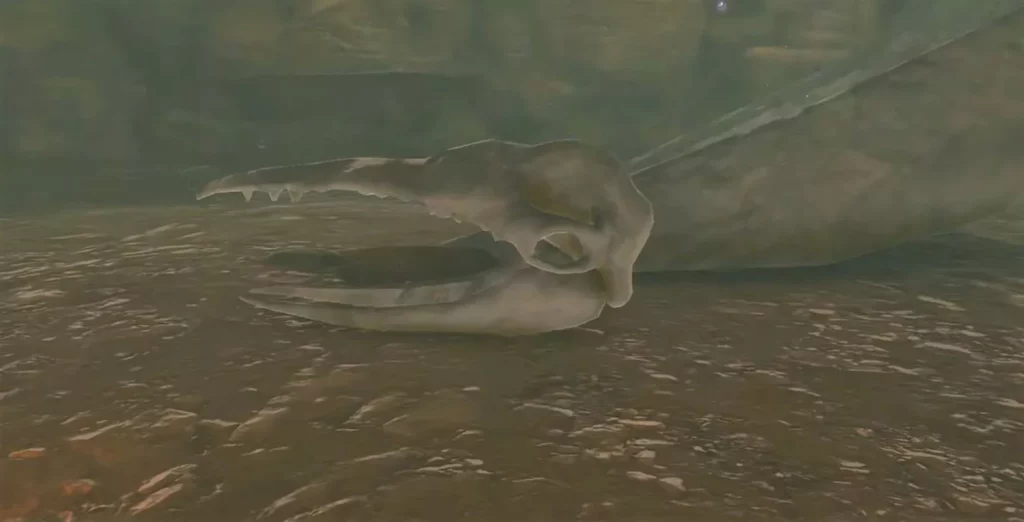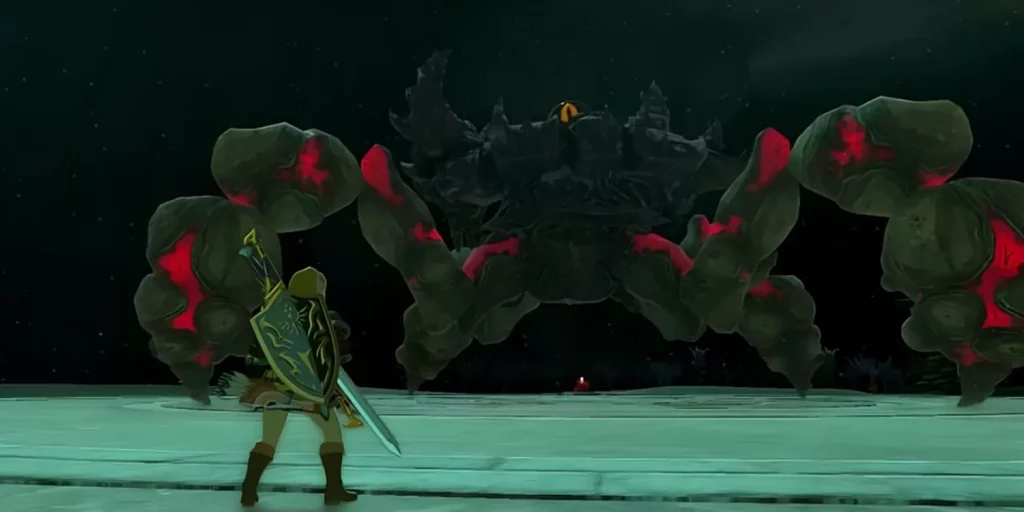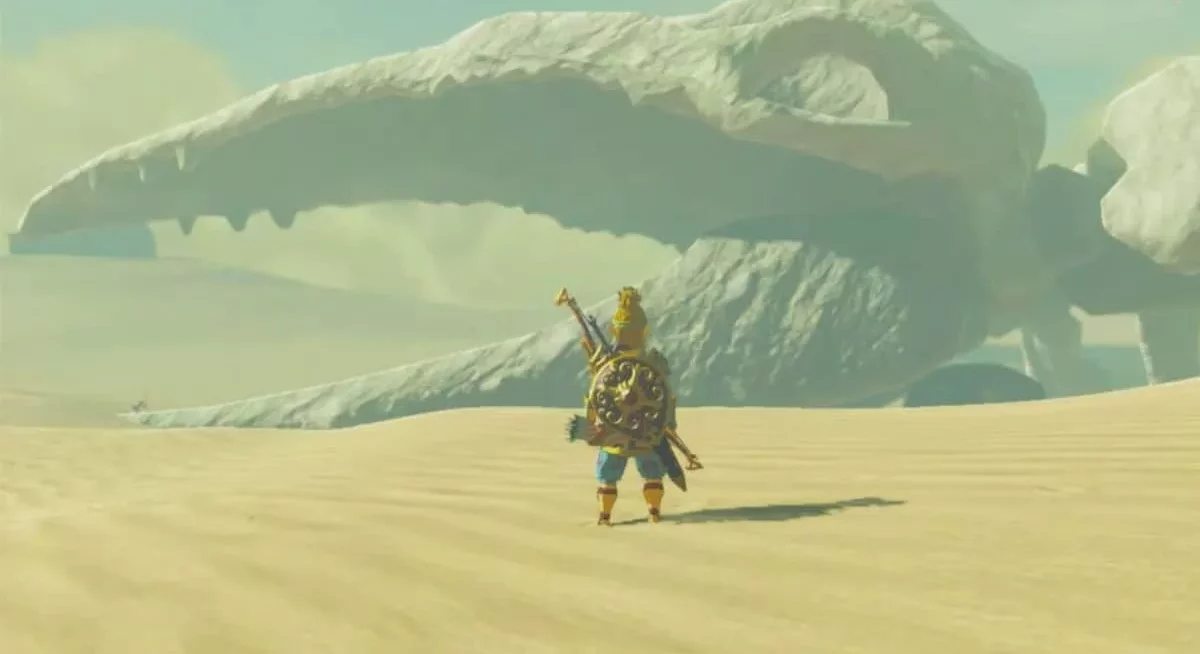In The Legend of Zelda: Tears of the Kingdom, the land of Hyrule holds many secrets, and it expands the scenery from the previous game by revealing the Depths beneath. Among these new features, a particular mystery ties back to Breath of the Wild. Unusual landmarks, resembling the Leviathan skeletons, now adorn the plains of Hyrule and extend into the Depths.
This enigma stems from the Leviathan skeletons that were strategically positioned across Hyrule in Breath of the Wild. While these skeletons remain stationary and unchanged between the two games, they have multiplied in number, shrouded in darkness, and reappear in familiar spots within the Depths, resembling the original landmarks.
Leviathan Skeletons’ Enigmatic Role Across Breath of the Wild and Tears of the Kingdom

Breath of the Wild and Tears of the Kingdom have introduced a wave of new fans to the Legend of Zelda series. Yet, amidst this excitement, some players might miss the significance of the Leviathan skeletons within the series’ ongoing lore. Notably, the Eldin Great Skeleton stands out with a faceplate resembling Levias from Skyward Sword. The other two skeletons aren’t as immediately recognizable references to large creatures from past Zelda games. Some enthusiasts speculate that the Gerudo Great Skeleton could be linked to the Wind Fish due to its wings, while the Hebra Great Skeleton could possibly represent Oshus.
These skeletal allusions to earlier installments deepen the notion that Breath of the Wild serves as the series’ conclusion. Their continued presence in Tears of the Kingdom reinforces this idea. However, matters take an intriguing turn when these nods to singular deities emerge in the new Depths location of Tears of the Kingdom, mirroring their counterparts in the overworld. This becomes especially thought-provoking considering that other god-like beings such as the flying dragons must traverse chasms. Doubling up on the Leviathan skeletons presents peculiar implications.
Intriguing Depths and Mirrored Realms in Tears of the Kingdom’s Hyrule

The Depths in Tears of the Kingdom’s Hyrule present significant implications for the game’s lore, engaging Legend of Zelda content creators in ongoing theories and analyses. Within Tears of the Kingdom’s main narrative, the Depths remain a puzzling realm, and Hyrule’s inhabitants continue to study its history through the Zonai architecture and structures that endure. Although these architectural elements and peculiarities scattered throughout provide players with a basic grasp of the Depths, they are still enigmatic.
Among the evident hints within Zonai architecture, the presence of three Leviathan skeletons, positioned similarly to their counterparts in Hyrule’s surface, carries considerable significance. The most profound implications emerge from these corresponding locations, where the overworld and the Depths reflect each other as light and shadow. This notion gains support from the alignment of Tears of the Kingdom’s Lightroots with Zonai shrines, as well as the inversion of mountains and rivers in the Depths.
The newfound Leviathan skeletons shed light on the ancient history of the Depths, suggesting a parallel evolution with Hyrule, encompassing distinct deities. This parallels the concept of the Light and Dark worlds in A Link Between Worlds, which also presented mirror images of each other. This revelation could potentially foreshadow the direction of Tears of the Kingdom’s DLC, potentially unveiling the intertwined history of these dual realms. The presence of these mirrored Leviathans reinforces this narrative connection.
